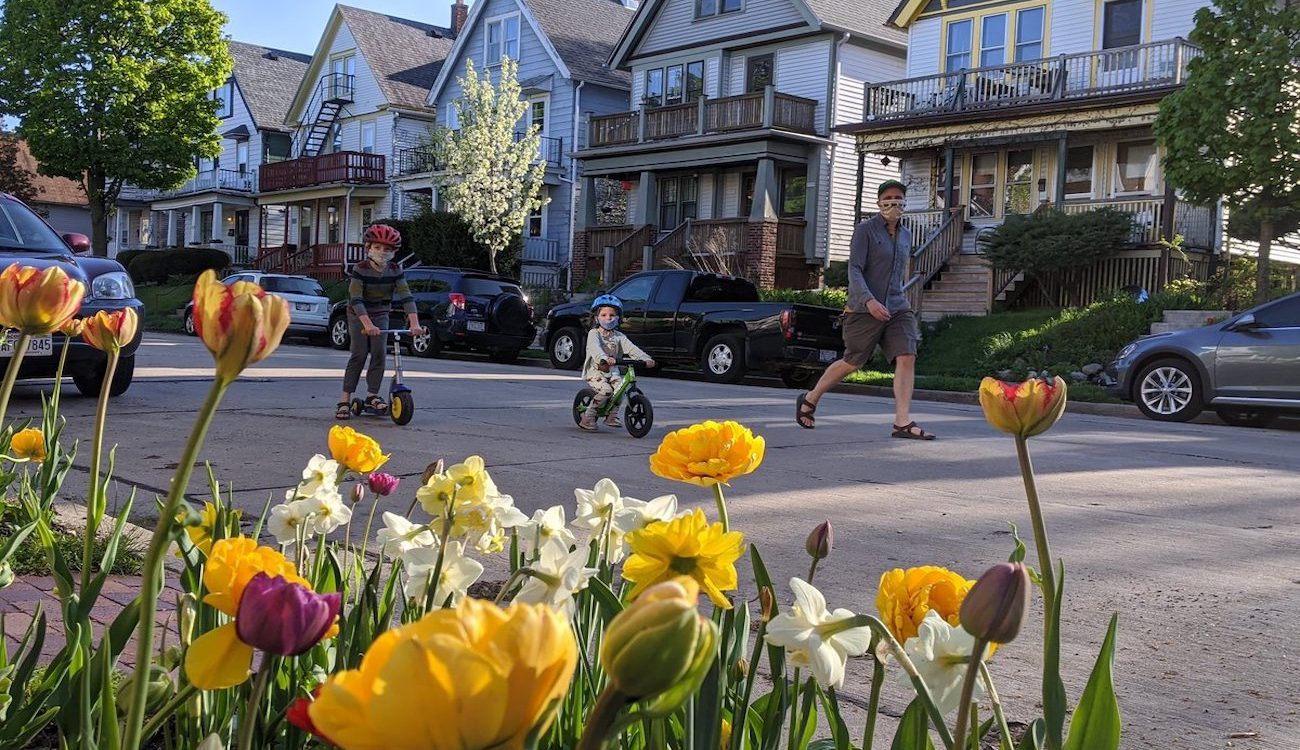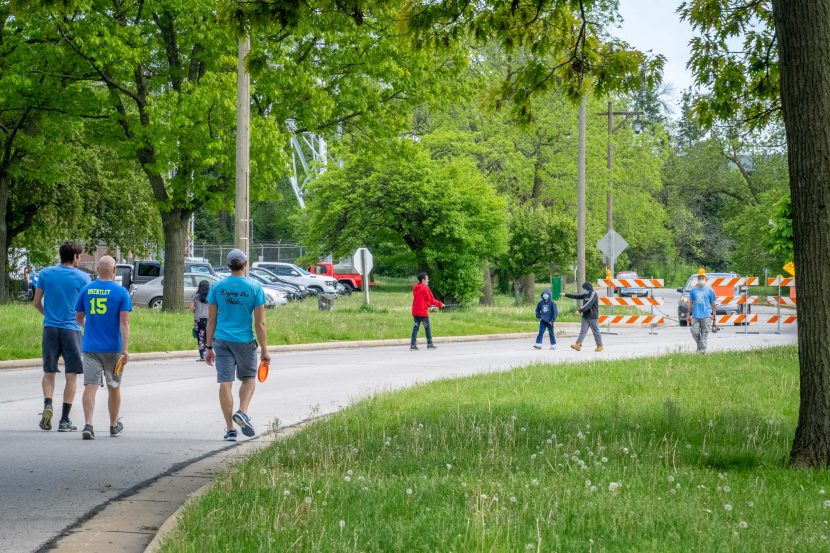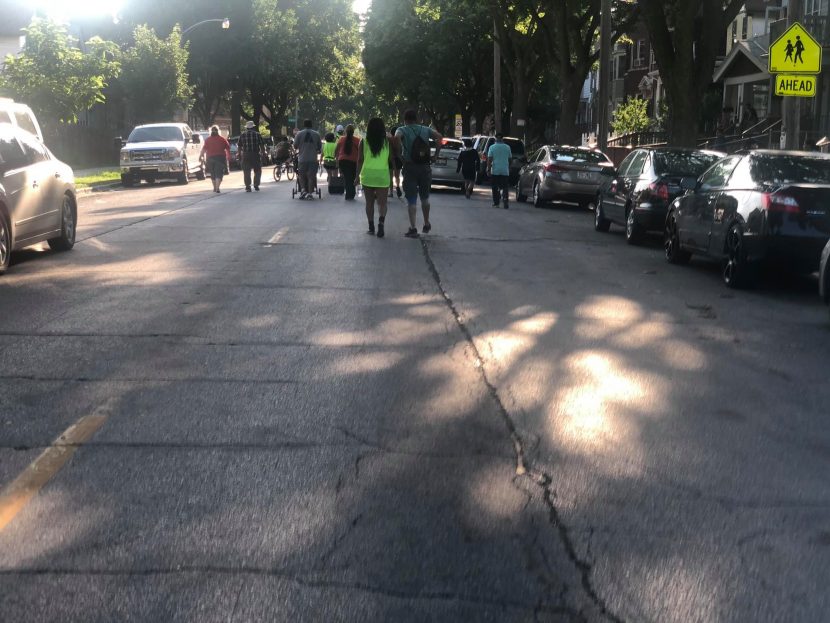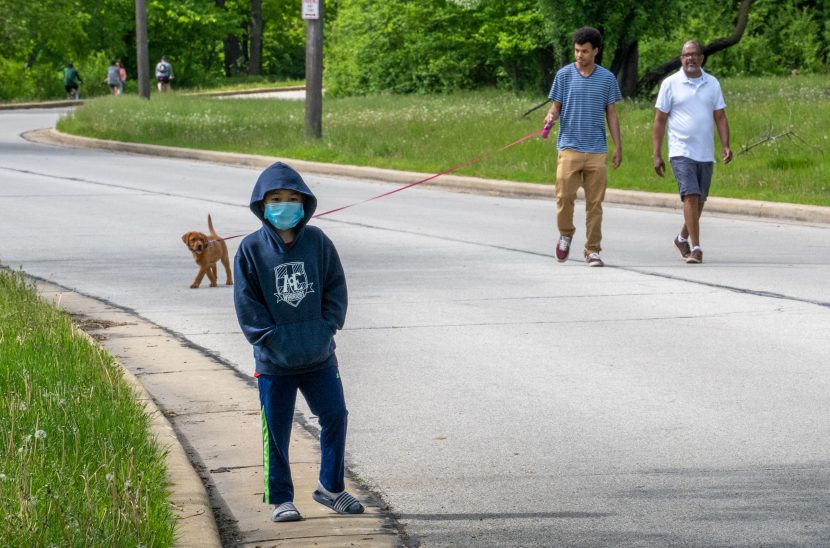
Active Streets Update
Back in April, the Wisconsin Bike Fed advocated for leaders from across the state to provide more space for residents so they may get well-needed exercise and fresh air during the COVID-19 pandemic without overcrowding trails. With so many people stuck We saw vehicle-miles-traveled go down significantly anywhere from 40-70% in cities like La Crosse, Madison, and Milwaukee, while trail counts were rising.
Thankfully, both the City of Madison as well as Milwaukee and the County responded accordingly. In Milwaukee, the City and the County launched the Milwaukee Active Streets program, which closed off four Milwaukee Co. parkways to through traffic and to match partially closed neighborhood streets with support from the City of Milwaukee, allowing for local traffic only.
It has been almost four months since the metro-area programs launched and there have been plenty of upfront successes as well as crystal clear opportunities to create a sustainable program model that is expedient and flexible compared to traditional public safety solutions and community engagement.
In Milwaukee, the City and County originally had slated four corridors each to remain closed or partially closed to allow for safer physical distancing. We now know that the local streets chosen fit the following criteria:
- parkways had adequate surrounding neighborhood parking for those with accessibility needs to still get into the parks safely
- local streets focused on remedying a lack of close proximity to the urban trail system
- equitable geographic disbursement
- streets that are slated for bike and walk safety improvements.

So where are we now?
Two out of the four parkways remain closed or partially closed to through traffic, Little Menomonee Parkway and Humboldt Parkway. Jackson Park closure was reopened to motor vehicles after local pressure by automobile users. Last week, Milwaukee County Parks Trails Coordinator Jessica Wineberg reported that Humboldt Parkway, on Milwaukee’s Southside, had been partially reopened to support more accessibility needs. Wineberg reported that though there existed on-street parking and updated ADA access to the park, people with disabilities’ closer access to the park’s core was highly desired. It’s important to note that all of Humboldt Park’s amenities were unavailable when the County closed the parkway, including bathrooms, playgrounds, and the beer garden. Picnic areas are still restricted. Now some of these amenities are back up and running so Milwaukee County has opened up half of the parkway from East Montana to Park Road.
Also on Milwaukee’s Southside, a local street, E. Washington Street from South 1st St to South 20th St has been partially closed to through traffic. The local health organization Sixteenth Street Community Health Care Centers has reinvigorated their health and wellness group “Latinos por la Salud” and encouraged residents to get up and take walks in the evening by utilizing the partially closed street. The group ends with a short stretch and aerobic session led by Yosmary Godkin. Masks are required and fun is had!

The Bike Fed is a proud supporter of SSCHC and Latinos por las Salud, and in their efforts to get people out and walking has also provided a small stipend for community leaders to along the corridor to encourage others to get out and moving. We aim to support the replication of the final Active Streets corridor to be opened on Galena Street from the Tiefenthaller Park area all the way to Washington Park. We’re partnering with Peak Initiative, Safe & Sound, and Midtown Alliance to support another walking club!
While the Galena Active Street was chosen a couple of months back, the Bike Fed discovered that information about the program hadn’t yet reached residents. The Bike Fed along with local leaders and the DPW have taken time for this last street to be launched in order to fully include voices of residents and other community organizations to ensure that the project can be supported and safe instead of an added burden. We are happy to announce that this week the Active Street corridor along Galena has been launched with positive community support.

This brings us to my closing thoughts: About a month ago, an article was written by planner Dr. Destiny Thomas of Thrivance Group in Los Angeles responding to the nationwide movement of giving back road space for non-motorized users. Dr. Thomas emphasizes that even though we may desperately need this space to address the pandemic, every neighborhood is different and has different relationships with public space. She points out that open streets projects can put Black Indigenous People of Color (BIPOC) in more harm’s way. “The announcement of open streets from Oakland to Minneapolis to New York City left me wondering how advocates for them would respond to data showing Black people make up 87% of those who are being criminalized in the name of “social distancing,” Thomas goes on further to cite that quick-build projects that are popping up around the country fail to address the environmental factors at the root of health disparities among BIPOC communities. “ Indigenous People are virtually excluded from data analysis and relegated to the remnants of urban space. Planning processes tend to dismiss their existence and the impacts of these projects on their communities as being statistically nominal.” In summary, if we mean to take a more serious and urgent approach to increase street safety, broad long-term planning with real investment must occur, which includes fair housing, restorative environmental justice, equitable Smart Growth, and shared power between residents and decision-makers in the design participatory process.
I reached out to the City of Milwaukee Department of Public Works, inquiring about whether the City will make Active Streets a permanent tool to complement long-range planning and the response was hopeful. “We do see it as an important tool to begin conversations with community members on how they use and view their streets and what types of quick changes we can make to create safer spaces for walking and biking,’ says Associate Planner Kate Riordan. As a partner, the Bike Fed is hopeful that here in Milwaukee we are advocating for the Active Streets program to be a permanent solution for starting the design engagement process with residents because it is a flexible and highly participatory tool. We also acknowledge that transportation planning is just one element of the broader scheme of land-use. We will continue to advocate that government agencies, such as city development and public works, communicate effectively as the Bike Fed and its partners fight for the proper investments to be made for permanent and equitable outcomes.